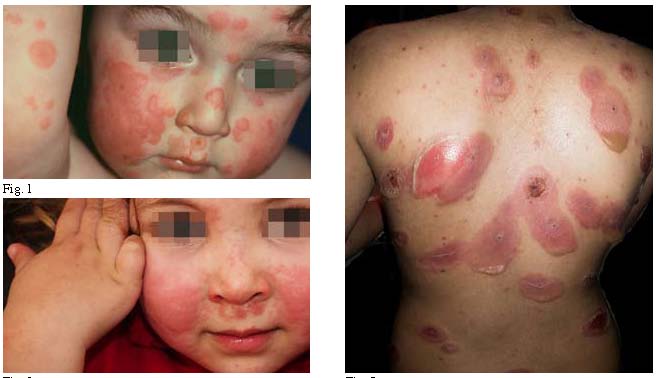Erythema multiforme/Perilesional polymorphic dermatitis

Downloads
DOI:
https://doi.org/10.26326/2281-9649.27.3.1446How to Cite
Abstract
The cutaneous manifestations caused by Herpes simplex (HS) virus infection also depend on the host reaction: so in the virgin subject from previous contacts it usually gives unspecific manifestations accompanied by general symptoms or may manifest itself clinically in the child as neonatal HS, herpetic eruption on pre-existing dermatitis, herpetic gingivitis and stomatitis. After the first contact has occurred, the immune response is unable to prevent recurrences, but under normal conditions prevents the virus from becoming generalized. In a minority of subjects, herpes simplex recurrences are followed by post-herpetic erythema multiforme (Fig. 2). The latter is characterized by erythematous, papular (Fig. 1) and bullous (Fig. 4), target, acrolocated lesions that regress spontaneously or with antiviral drugs. Post-herpetic erythema multiforme is probably due to the presence of viral antigens bound to cells or conjugated in immune complexes. Perilesional dermatitis is a reaction similar to erythema multiforme for morphology, acuteness and clinical course, but with a different distribution of lesions occurring only at the periphery of previous infectious lesions, 7-10 days after their appearance. We observed this reaction in case of varicella (Fig. 3) and more frequently after the first episode of staphylococcal pyoderma (Fig. 5). In this case we hypothesize that the infectious agent entering for the first time the organism induces the formation of a clone of immunocompetent cells; that clone, when after the 7-10 days required for its formation enters the peripheral circle, will be located at the periphery of the previous infectious lesions where viruses or bacteria are still present and will cause the reaction with a mechanism similar to what happens in experimental or therapeutic sensitization to diphencyprone.
